By Michelle DiMuzio, Communications Coordinator
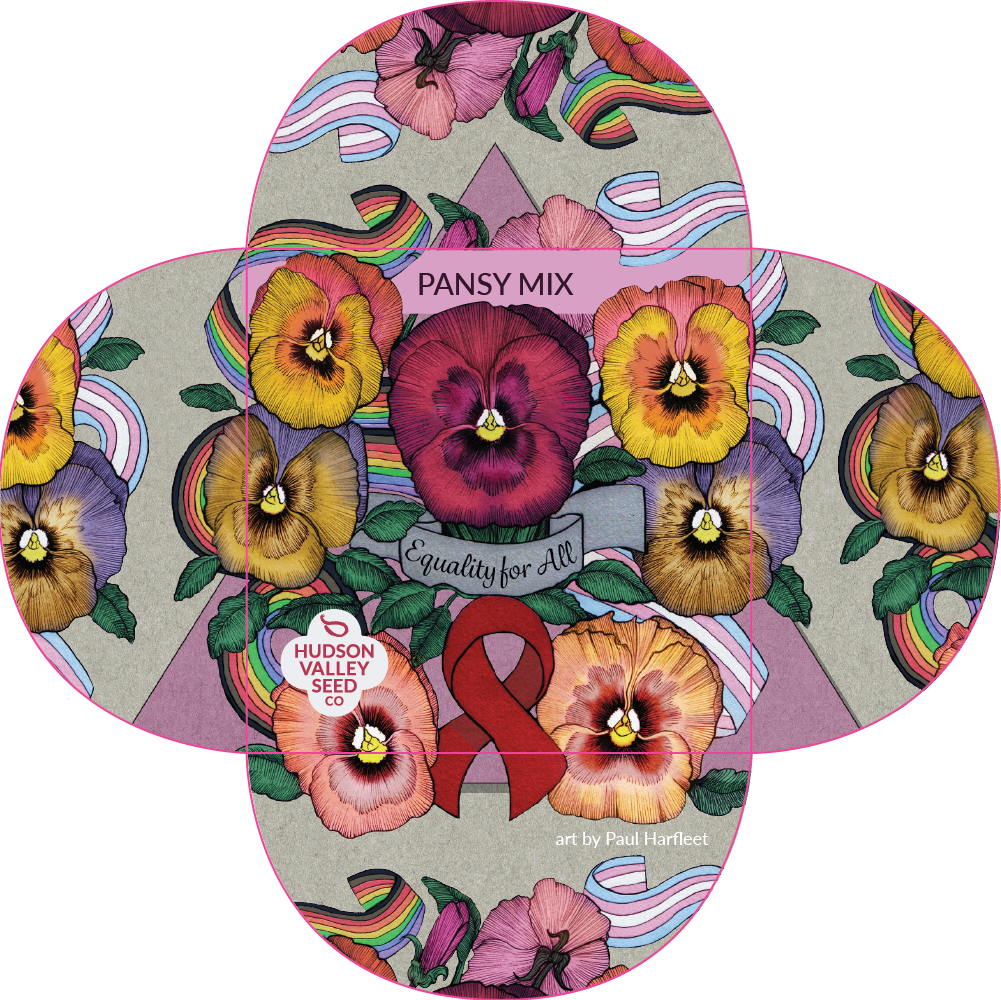
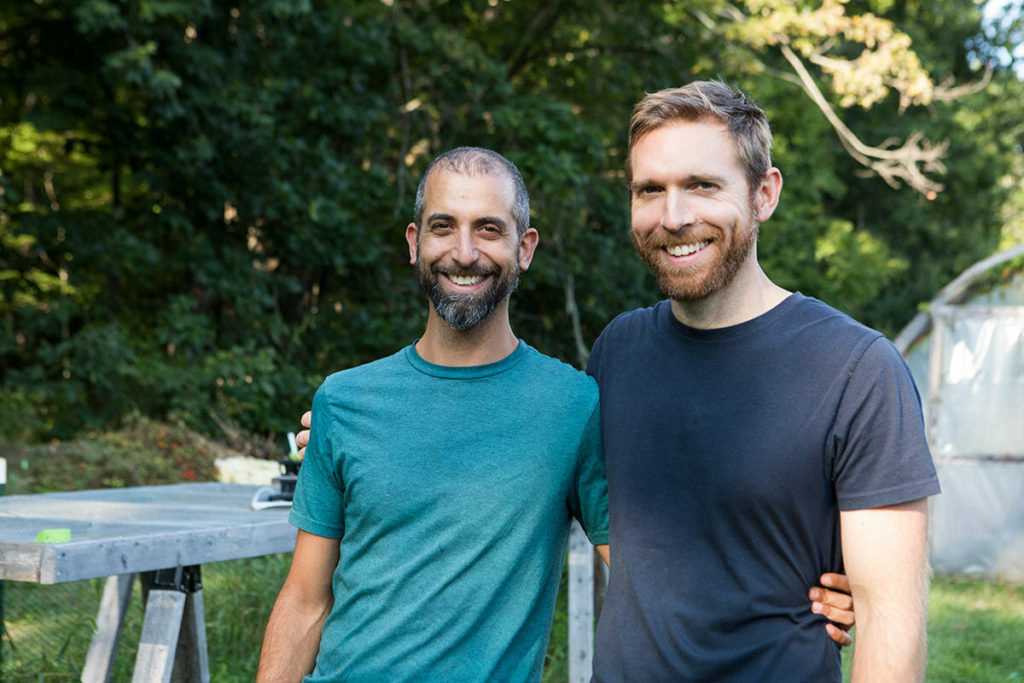 When K Greene, co-Founder of Hudson Valley Seed Company, started working at the Gardiner Library in 2004 to offset graduate school expenses, he never imagined the journey this seemingly impermanent position would take him. After participating in conversations with library patrons about the robust local food scene in the Hudson Valley, food enthusiasts decided to conduct a local diet challenge. For the first iteration, people were tasked with eating foods from within 100 miles of their location. The next year, they whittled this down to 30 miles. These challenges sparked conversations with farmers discussing access issues, how to make connections for growing food items participants could not source locally, and ultimately, seeds. “During that meeting I asked, ‘Where do seeds come from?’” K recalled. “And the farmers said from the seed companies. So then I asked, ‘Where do the seed companies get them from?’ And no one knew the answer.”
When K Greene, co-Founder of Hudson Valley Seed Company, started working at the Gardiner Library in 2004 to offset graduate school expenses, he never imagined the journey this seemingly impermanent position would take him. After participating in conversations with library patrons about the robust local food scene in the Hudson Valley, food enthusiasts decided to conduct a local diet challenge. For the first iteration, people were tasked with eating foods from within 100 miles of their location. The next year, they whittled this down to 30 miles. These challenges sparked conversations with farmers discussing access issues, how to make connections for growing food items participants could not source locally, and ultimately, seeds. “During that meeting I asked, ‘Where do seeds come from?’” K recalled. “And the farmers said from the seed companies. So then I asked, ‘Where do the seed companies get them from?’ And no one knew the answer.”
This set K off on a research exploration, which resulted in learning about global seed issues, loss of genetic diversity and culture, and seed resilience and adaptation in the context of climate change. In tandem with these discoveries, K started the first seed library housed in a public library in the country. With no model to follow, he focused on the needs of the community and thought it would just be a little seed garden and seed saving club. However, it blossomed into something bigger than he could have imagined. “I just got swept away by seeds themselves, their beauty and power, and the infinite diversity of seeds,” K shared. “There is so much to learn from seeds; we look at these huge global issues and think, ‘this is overwhelming, me against Monsanto, what can I do?’ Seeds and their exponential generosity really present us with this ability to create a network to share our seeds and to expand. We can make a really big difference in our local communities and go from there.”
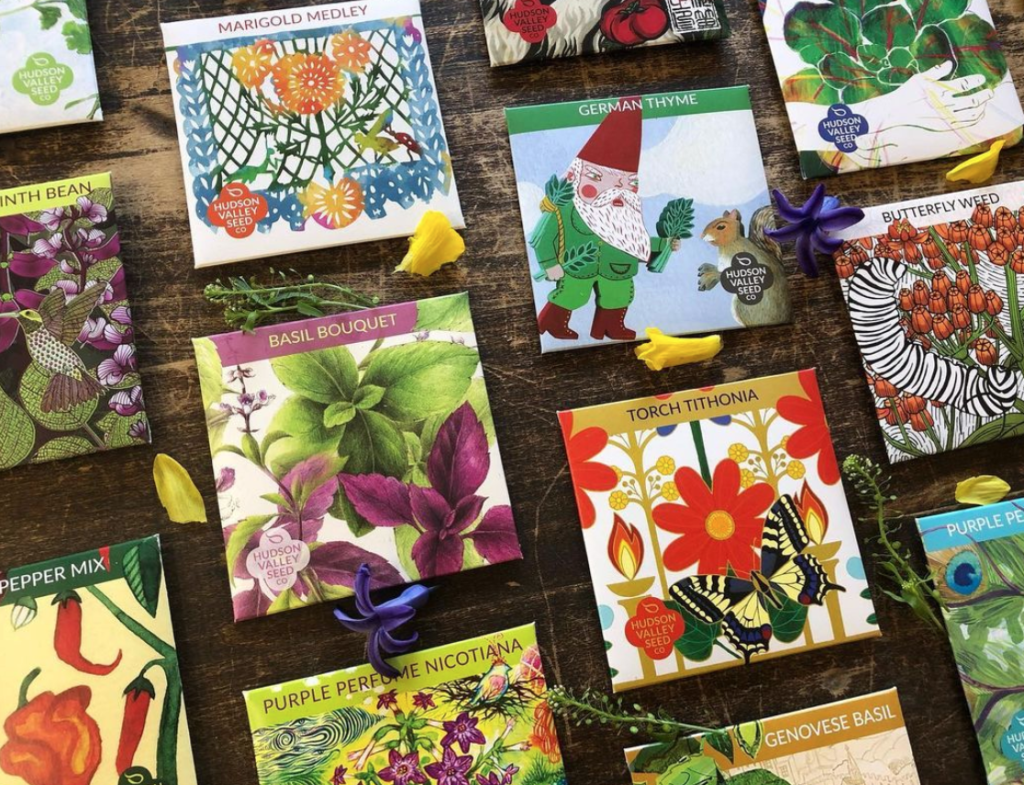 In 2008, K quit the library job to open the Hudson Valley Seed Company with his partner, Doug Muller. They had no agricultural or business experience but they did have a passion and desire to help preserve the multi-layered importance of seeds. What started off as a homestead enterprise quickly grew into something bigger and far more reaching than ever imagined; not only have K and Doug reached an expansive number of people, they have also been able to preserve seed varieties that might have otherwise disappeared. During the COVID-19 pandemic, their efforts were even more essential as they provided a fundamental element of the food chain, keeping up with the high demands for seeds and communities’ needs.
In 2008, K quit the library job to open the Hudson Valley Seed Company with his partner, Doug Muller. They had no agricultural or business experience but they did have a passion and desire to help preserve the multi-layered importance of seeds. What started off as a homestead enterprise quickly grew into something bigger and far more reaching than ever imagined; not only have K and Doug reached an expansive number of people, they have also been able to preserve seed varieties that might have otherwise disappeared. During the COVID-19 pandemic, their efforts were even more essential as they provided a fundamental element of the food chain, keeping up with the high demands for seeds and communities’ needs.
Another crucial aspect of the business for K and Doug was to evoke the stories of seeds. Hudson Valley Seed Company focuses on open-pollinated and heirloom seeds, communicating there is more value to seeds than just their commodity; value lies in their stories, too. “Passing down a seed from generation to generation is similar to passing down a watch or painting or rug,” K explained. “To the people it is passed down to, there is a rich history and a sense of value beyond monetary. It is important for us to also recognize and honor what led up to the moment a seed reaches us. We are witnessing 10,000 years of genetic history of coevolution and connection to humans from 5,000-8,000 years ago.
Most recently, K has been particularly fascinated with the Klip Dagga variety, described as being “playfully strange, with a Seussian sort of beauty, magnified by the swooping, darting hummingbirds that come to drink its nectar.” K described his process of getting to know a plant with the ultimate goal of adding it to the catalogs to share it widely. “After falling in love with a seed, the research starts,” K elaborated. “How far can we trace it back? What is our responsibility for sharing its story? Since we share a lot of stories that aren’t from our own culture, we have to be very self-aware of when it’s okay to share the story ourselves or when we should be reaching out to other folks; someone we can develop a relationship and trust with to tell the story. This is an ongoing conversation we have within the seed company.”
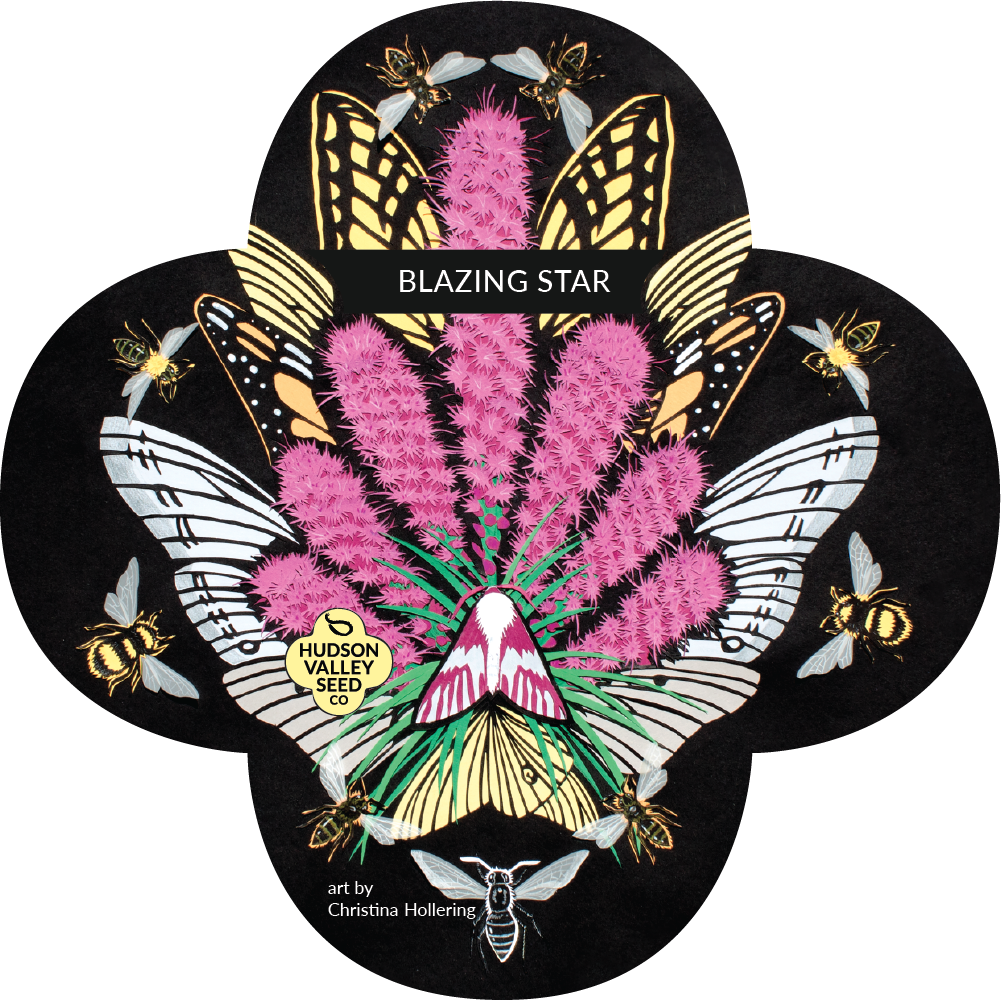 Perhaps one of the most unique facets of Hudson Valley Seed Company is the marriage of seeds and art. From the start, K felt the seed packages were an opportunity to communicate to people how they felt about and valued seeds – not just their commodity, but also their story. He described the conventional seed packets that most of us are used to as being perfect and unattainable, very similar to what we see in fashion magazines. “When we see that, we think we should look perfect like the people in the magazines and when we don’t, we internalize it,” K explained. “It’s the same with seeds – we don’t want people to think it’s going to be “perfect”. What we do want is for people to look at the seed pack and say I’m planting a story. What story do I want to grow?”
Perhaps one of the most unique facets of Hudson Valley Seed Company is the marriage of seeds and art. From the start, K felt the seed packages were an opportunity to communicate to people how they felt about and valued seeds – not just their commodity, but also their story. He described the conventional seed packets that most of us are used to as being perfect and unattainable, very similar to what we see in fashion magazines. “When we see that, we think we should look perfect like the people in the magazines and when we don’t, we internalize it,” K explained. “It’s the same with seeds – we don’t want people to think it’s going to be “perfect”. What we do want is for people to look at the seed pack and say I’m planting a story. What story do I want to grow?”
To embrace this sentiment, K and Doug decided to not put photos on their seed packets, but instead paired up with various artists who resonated with individual seeds; K shared the story of the seed with the artists and they interpreted the story through art. However, it did not work initially; people were confused and even questioned if there were in fact seeds in the packets. Nevertheless, K did not want to give up on this idea; so he engaged in seed literacy and education, utilizing art as a vehicle for having conversations with people. After some time, people started to get inspired by the art and expressed trying new seeds because of the art and stories, evoking a very emotional relationship to the seeds. This has led to the commissioning of over 250 works of art as well as a traveling gallery show, The Art of Seed, which has been featured around the world. “Looking back, I am so thankful I was stubborn,” K shared. “I also think it is related to our queerness. There are a lot of parts of my queer identity of questioning the world, of wondering where I fit in position to fi in or struggling to be my authentic self, and always being faced with that choice of, do I fit in to make things feel easy or do I find the inner strength to express myself? … That’s why I stuck with the art. I know I am swimming upstream, and it might be confusing for folks, but it felt like an expression of my authentic self and values being represented through the seed company.”
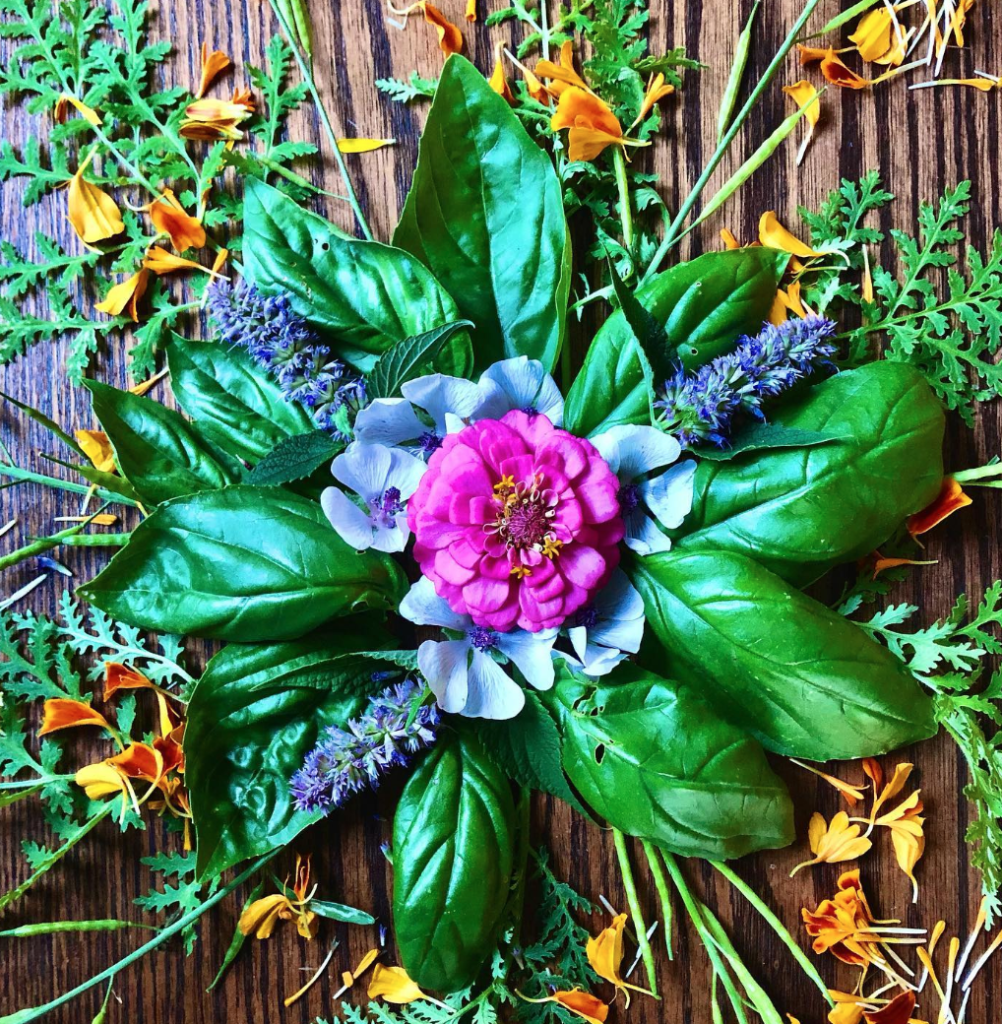 In concert with these values, Hudson Valley Seed Company also employs many queer folks and artists, and has created a loving, safe work space for folks of all gender expressions and sexualities. “Particularly when I started getting involved in farming, there were not many visibly out people,” K recalled. “This work provides an opportunity to show seed diversity and also that there is diversity in the farm and seed landscape.”
In concert with these values, Hudson Valley Seed Company also employs many queer folks and artists, and has created a loving, safe work space for folks of all gender expressions and sexualities. “Particularly when I started getting involved in farming, there were not many visibly out people,” K recalled. “This work provides an opportunity to show seed diversity and also that there is diversity in the farm and seed landscape.”
K and Doug plan to continue working on seed diversity issues, and K has begun consulting for other seed-related endeavors. “The bottleneck that has happened with diversity means over time we have less and less opportunity to have resilient varieties that can respond well to cultural and environmental changes,” K explained. The model he works with is to not have a model. Instead, he works individually with each community to address their passions and goals, and this also reduces the risk of blanket laws policing seed saving and diversity. “The cool thing is we can actually do something about it; these seeds are not lost forever. There is still so much to do, and that is what energizes me.”
Photo Credit | Modern Farmer + Hudson Valley Seed Company


What a beautiful article about obviously wonderful humans and their important work.
What a wonderful story . I have purchased these beautiful seed packs and now I have the story that make the seeds so special.